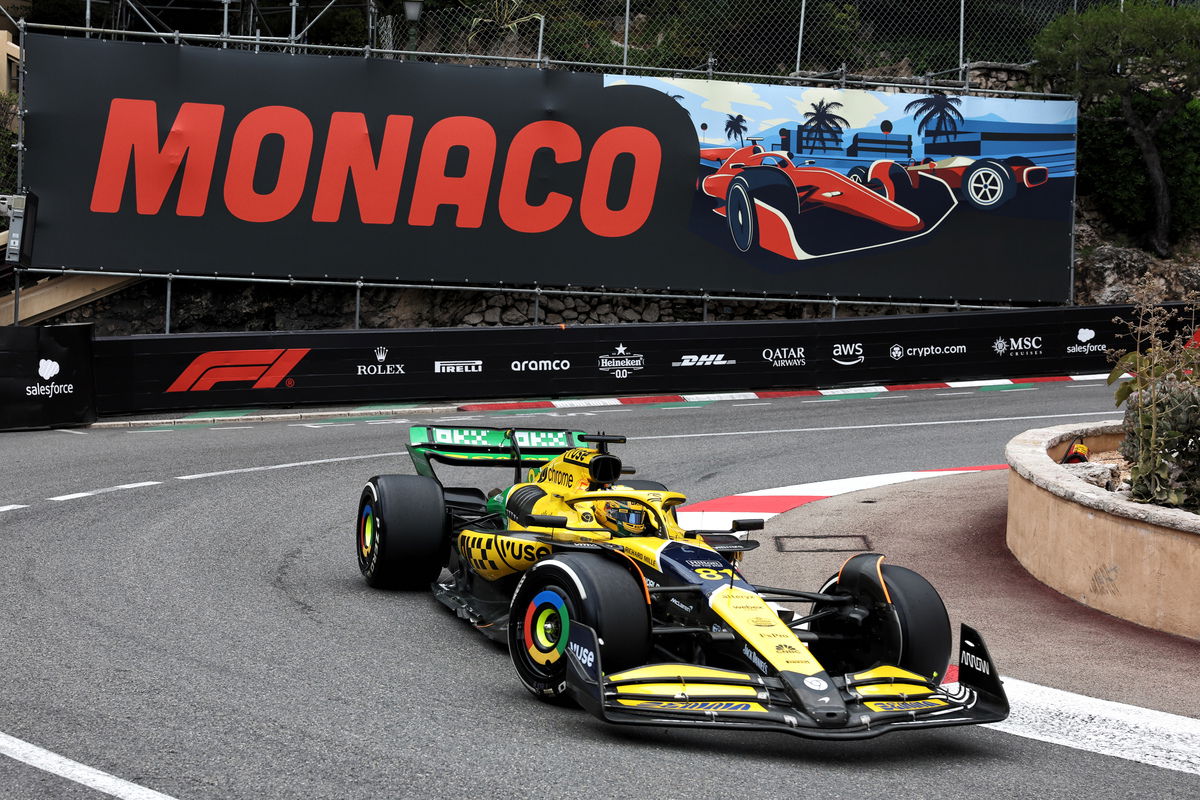

While McLaren made significant gains through the second half of 2023, its car remained peaky and suited to some venues far better than others.
The general trend was it worked well at high-speed but gave up time to its rivals in slower-speed sections – the hairpin and final chicane at Suzuka, for instance.
As such, it began to feature more towards to the front of the race, and was especially competitive at some venues, but remained half a step behind the likes of Ferrari and Red Bull Racing.
That trend appeared to continue in the early races of 2024 but has become less prevalent at recent events.
According to Stella, the team’s performance in Miami and Monaco suggests it now has a more rounded package, a product of improved understanding of the car and development work.
“It looks like the car we took to Miami sort of behaves well in low-speed, almost beyond what was our expectation,” Stella admitted.
“I think we have also understood how to use this car in low-speed, which seems to work well.
“Even Miami, if you think about the track layout, it’s dominated by low-speed.
“In Monaco, the sector where we struggle the most was the first sector, in which the lowest speed corner is Corner 1, which is 120[km/h], so it’s a medium to highspeed sector,” he added.
“So it looks like the picture of our competitiveness is starting to finally change, where low-speed doesn’t appear any more like a clear weakness.”
The challenge with improving low-speed handling is addressing the angle of attack of the car.
At highspeed, as a car corners, it does so with forces typically applied to the outside of the car’s nose. At slower speed, the dominant force comes from the inside corner.
Designing around that changing map and producing a car that works well in both conditions is enormously difficult.
“Certainly, you try to make sure that, if you focus your development in a certain area of the map, you don’t compromise some other areas,” Stella explained.
“What we see trackside is a good reflection of what we were expecting, looking at how we improve the car.
“The performance we are at the moment pulling off in low speed is slightly beyond expectation – we didn’t think that we actually had altered so much our car to be this more competitive in low speed.
“This is a point, if anything, that we are trying to understand ourselves.”
The improved package, on paper, should suit Circuit Gilles Villeneuve, home to this weekend’s Canadian Grand Prix.
Stella, however, is wary that the need to ride the kerbs – a weakness that does remain – may prove a bigger factor.
“Still, there’s plenty of opportunities,” he observed of potential to unlock from the car.
“We are not entirely satisfied, for instance, with the behaviour on kerbs, on bumps, there’s some more work to do.
“But I think the positive news that is that through development, we seem like we have been able to alter this picture whereby we were not performing well in low speed.
“We’ll have to see over a few more races, but definitely it’s an objective of our development to make sure that we don’t compromise some strengths of the car because we chase some other features,” he added.
“Not all the times it’s possible. But ultimately, I guess this is part of the quality of the development that each team carries out.”




















Discussion about this post